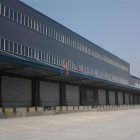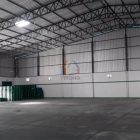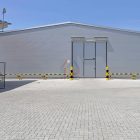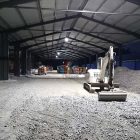Discussion of steel warehouse structural design
With the rapid development of modern logistics and warehousing industries, as an important logistics facility, the structural design of steel warehouses is particularly important. Steel warehouses occupy a pivotal position in the field of modern warehousing due to their stable structure, short construction period, and high cost-effectiveness. This article will delve into the key points, principles and optimization strategies of steel warehouse structural design.
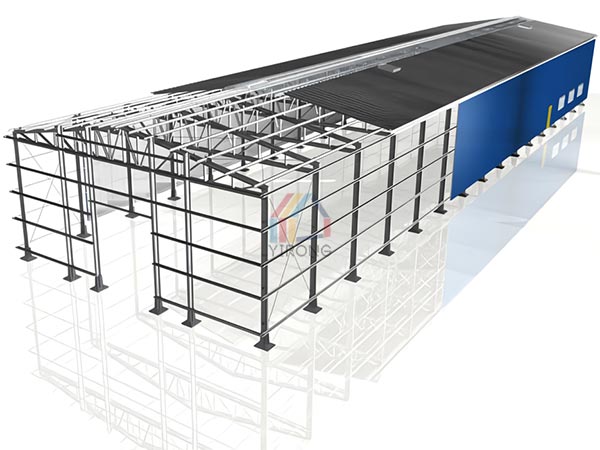
Key points of steel warehouse structural design
- Load analysis: The structural design of a steel warehouse first requires a comprehensive analysis of the loads it will bear. This includes the self-weight of the warehouse itself, the weight of stored items, external loads caused by natural factors such as wind and snow, and dynamic loads generated during transportation, loading and unloading, etc.
- Structural selection: Select an appropriate structural form based on the results of load analysis. Common steel warehouse structural forms include portal rigid frame structure, frame structure and grid structure. Structural selection should comprehensively consider factors such as use function, construction conditions, and cost budget.
- Material selection: Steel is the main material of steel structure warehouse, and its performance directly affects the stability and safety of the structure. Therefore, in material selection, steel with reliable quality and superior performance should be selected, and inspection and acceptance should be carried out in strict accordance with relevant standards.
- Node design: Nodes are an important part of the steel structure warehouse, and their design quality directly affects the overall performance of the structure. The node design should ensure reliable connections, clear force transmission, and consider construction convenience and economy.
- Fire protection design: The fire protection performance of steel warehouse is a factor that cannot be ignored in the design. Effective fire prevention measures should be taken, such as setting up fire isolation belts, spraying fire retardant paint, etc., to improve the fire prevention capabilities of the warehouse.

Principles of steel warehouse structural design
- Safety principle: Structural design should ensure that the structure maintains sufficient stability and safety under various loads to prevent safety accidents such as collapse and overturning.
- Economic principle: On the premise of meeting safety requirements, the structural cost should be reduced as much as possible to improve economic benefits. This includes measures such as optimizing structural forms, selecting economical and reasonable materials, and reducing material usage.
- Practicality principle: The structural design should meet the functional requirements, facilitate the storage, transportation and loading and unloading of goods, and improve the efficiency of the warehouse.
- Principle of aesthetics: As a modern storage facility, the appearance of steel warehouses should be beautiful, harmonious and consistent, and meet modern aesthetic requirements.

Optimization strategies for steel warehouse structure design
- Introducing new technologies and materials: With the advancement of science and technology, new building materials and structural technologies are constantly emerging. In the design of steel warehouse structures, new technologies and materials can be actively introduced to improve the performance of the structure and reduce costs.
- Refined design: Through refined design, the structural layout and component size are optimized to reduce material usage and waste, and improve the overall performance and economy of the structure.
- Modular design: Using the modular design method, the steel warehouse structure is divided into several modules for design and production. This can speed up construction progress, improve construction quality, and reduce construction costs.
- Intelligent design: Combining modern information technologies such as the Internet of Things and big data to achieve intelligent design and management of steel warehouse structures. Through real-time monitoring and data analysis, problems can be discovered and solved in a timely manner to improve the safety and efficiency of the warehouse.

Steel warehouse structural design is a complex and important task. Through comprehensive load analysis, reasonable selection of structural forms and materials, careful design of nodes and fire prevention measures, the stability and safety of the steel warehouse structure can be ensured. At the same time, following the principles of safety, economy, practicality and aesthetics, and using new technologies and materials for optimized design, the performance and economic benefits of steel warehouses can be further improved.


